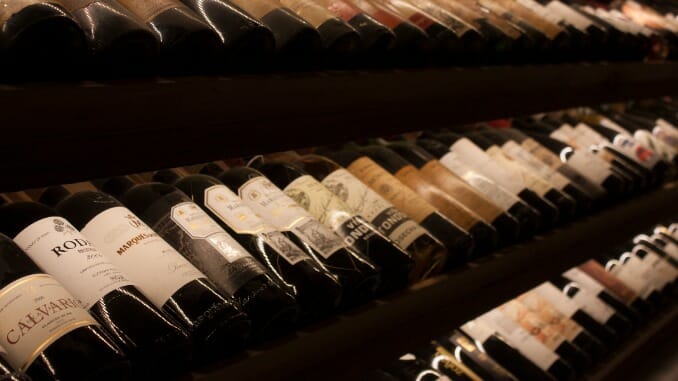
The market for organic products in the United States has grown more than 25-fold in the last two decades. Somehow, though, wine made with organic methods hasn’t shared in this growth. There are “green” wines, of course, but they’re a tiny part of the market and wine drinkers have shown little enthusiasm for them—certainly not in the way grocery shoppers have flocked to organic products.
Most analysts say worldwide organic wine consumption represents less than 5 percent of all the wine made, and it’s likely no more than a couple of points in the U.S. despite recent signs wine drinkers want to be greener. Doubt this? Then check out the size of the organic vegetable department at the local grocer and compare it to a similar section at the neighborhood wine shop. The former will be much, much bigger.
The reasons for this center around confusing terminology; while an organic tomato is an organic tomato, a wine made with organic grapes is not necessarily an organic wine. In addition, the wine business has never embraced organics; only a handful of U.S. wineries with national reach make organic wines. And even the best-intentioned retailers are often confused or disdainful or both when it comes to green wines, stuffing them in the back of the store where no one can find them.
Finally, most consumers are not quite sure if organic wines are supposedly of higher quality because they’re organic or because they contain higher-quality grapes and are made by more talented winemakers with more resources and better soil at their disposal.
Knowing this, there are broadly six kinds of green wine:
Made with Organic Grapes
These wines are produced similarly to other organic produce since the grapes used to make the wine must be grown according to federal regulations and certified by a third-party organization. These wines will carry a label that says “made with organic grapes.” This method, though, doesn’t guarantee that other parts of the winemaking process, like the yeast used for fermentation or the wood barrels used for aging, are organic.
Labeled Organic
These wines are made with organic grapes and require organic yeast, and added sulfites are not permitted. Sulfites occur naturally in all wines and act as a preservative, and conventional winemakers usually add more sulfites to the wine during before, during or after fermentation to keep the wine from spoiling. This term is also regulated by the federal government and requires third-party certification, and label will say “organic wine.” So what’s the difference between the two in terms of quality? It all depends who you ask.
Biodynamic
The next step beyond organic is biodynamic, which is a method based on principles established by European philosopher Rudolf Steiner some 100 years ago. It includes guidelines for crop diversity and planting and can be quite practical, like making sure tractor oil doesn’t drip into the vineyard. But it’s biodynamic wine’s aesthetic side that has garnered the most attention, for biodynamic farming takes in a “spiritual-ethical-ecological approach to agriculture, food production and nutrition,” according to the Biodynamic Association. This includes the infamous practice of burying a cow horn filled with manure in the vineyard at a specific time and then removing it at a specific time. Biodynamic wines are certified by the private Demeter Institute and are usually labeled as such.
Natural Wine
Perhaps the most controversial of all of these categories, natural wines are made in much the same way that wine was made before industrialization: just grapes, natural yeast and the winemaker’s skill, according to its advocates. Natural yeast is the wild yeast present on the grapes and in the winery; it’s not the industrial yeasts used in almost all beer and wine production that enables fermentation after the grapes are crushed into juice. Fermentation can’t be controlled as easily with natural yeast, and that can affect wine quality. Why controversial? Its adherents argue that non-natural wines aren’t really wine but a product of post-industrial technology.
Vegan and Vegetarian Wine
One of wine’s great urban myths is that wine is not vegan or vegetarian, even though it’s mostly grape juice and yeast. That’s because federal rules allow producers to use egg whites and dried fish bladder, called isinglass, to fine and filter their wines. The truth is that these products are rarely used anymore since they’re too expensive; almost all wine is filtered or fined with bentonite, a clay made from volcanic ash. In addition, there are few third-party certification agencies for vegetarian and vegan wine similar to those that certify organic wines, so there’s no standard for defining these wines.
Sustainably Farmed
This certification is part of a project by the Wine Institute trade group and the California Association of Winegrape Growers, established in 2003; wine made under these voluntary guidelines gets a sustainable label. The goal is for growers and wineries to use “vineyard and winery practices that are sensitive to the environment, responsive to the needs and interests of society-at-large and economically feasible to implement and maintain.”
Jeff Siegel is a wine writer based in Dallas. You can find more of his work at winecurmudgeon.com.